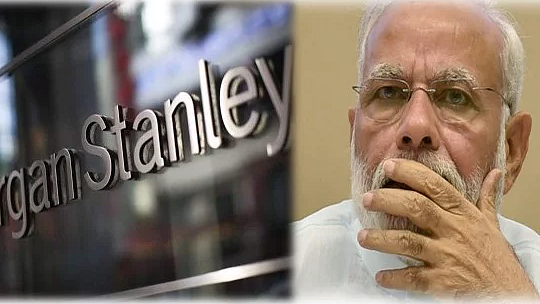Morgan Stanley report: Next Indian govt may not enjoy a majority
India’s next general election presents a tail risk as the market is unsure if the country will re-elect a majority government for the second straight term, says a Morgan Stanley report

India’s next general election presents a tail risk as the market is unsure if the world’s largest democracy will re-elect a majority government for the second straight term.
That risk is even more pronounced this time, according to Morgan Stanley Research. History suggests that markets approach general elections with a tinge of optimism and stocks tend to do well in the run-up to elections, analysts at Morgan Stanley India said in a report. However, they wrote, there is a major change versus history for the next year’s general election.
“Since 1991, every election has been preceded by a coalition government; hence, the market has had room to be hopeful of a stronger government,” Morgan Stanley said. “It enters the 2019 polls with a majority government already at the helm. So, it has to deal with the prospects of a weaker government at the centre.”
Prime Minister Narendra Modi’s ruling Bharatiya Janata Party has faced challenges in the past year as growth slowed to its lowest in three years after the cash ban and Goods and Services Tax rollout. Even as the economy rebounds, the government has run into a ₹20,000-crore fraud at the Punjab National Bank, India’s second largest public-sector lender. Two recent sexual assault cases in states where the BJP is either in power or shares it with a partner, has also left it red-faced. A return with a majority can no longer be taken for granted.
A weak majority for one of the national parties is considered to be between 220 and 260 seats, out of the 543 Lok Sabha seats.
With 15 months left to the polls, Morgan Stanley also outlines four factors that are likely to determine the prospects of Modi's re-election.
- Real Growth: While India's economic growth recovered to 7.2% in the last three months of 2017 after falling as low as 5.7% after demonetisation, it is“not strong enough for this position [BJP’s majority] to be totally secure”.
- Youth Voters: India’s youth is likely to decide the outcome of the elections with 250 million voters between the age of 18 and 28. BJP won the previous election with 172 million votes. “This sets the stage for a technology-intensive election campaign.”
- Alliances in Uttar Pradesh and Maharashtra: The two states account for 128 seats out of a total 543 in the lower house.
- The Eight Indicators: Two-wheeler sales, tractor sales, rural wage growth, consumer price inflation, minimum support prices, farmer well-being, direct benefit transfers and jobs growth. “If these indicators are in good shape in the coming months, that would enhance the prospects of re-election of the BJP-led NDA,” the report said
Follow us on: Facebook, Twitter, Google News, Instagram
Join our official telegram channel (@nationalherald) and stay updated with the latest headlines
- demonetisation
- inflation
- Employment
- youth
- Prime Minister Narendra Modi
- economic growth
- Goods and Service Tax
- price rise
- Bhartiya Janata Party
- 2019 general elections
- PNB Scam
- Morgan Stanley
- Absolute majority
- coalition government
- farmer issue